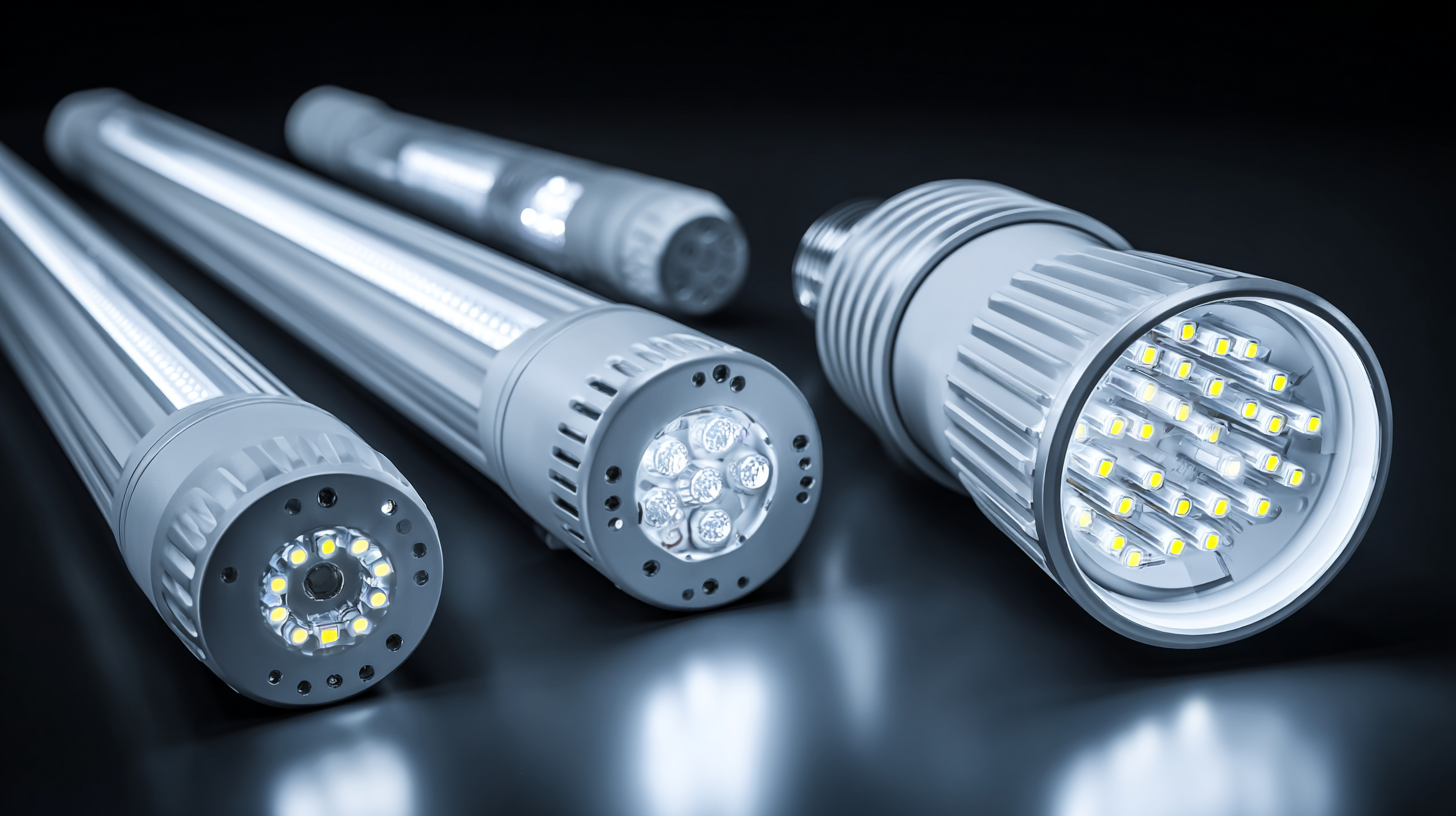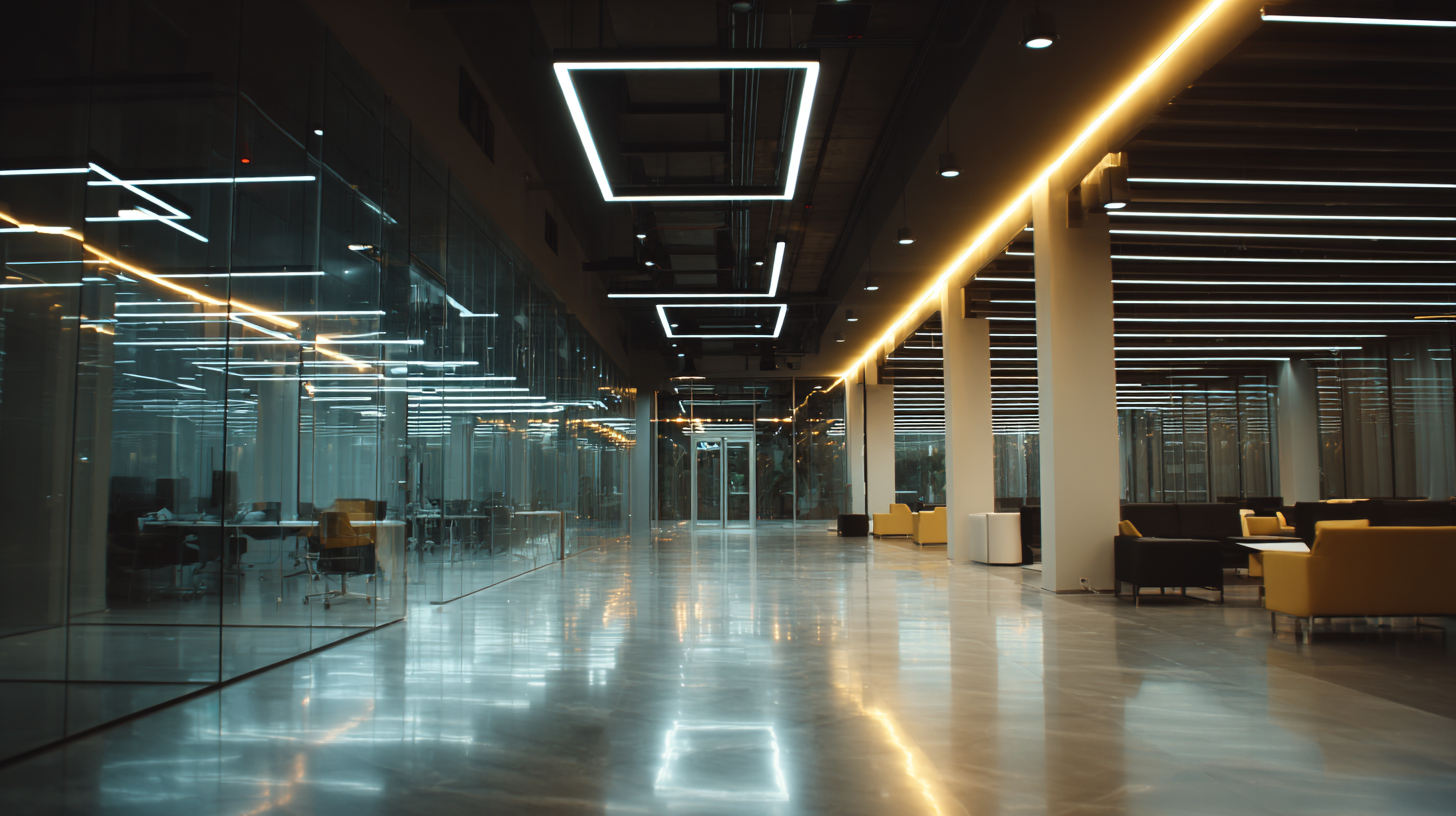
In the ever-evolving landscape of modern business, the choice of lighting is more critical than ever, particularly regarding Commercial LED Lighting solutions. According to a report by the U.S. Department of Energy, lighting accounts for approximately 15% of the total electricity consumption in commercial buildings, making efficient lighting choices not just sensible but essential for cost management and sustainability. As businesses increasingly transition to energy-efficient practices, Commercial LED Lighting has emerged as a leading solution, providing up to 75% energy savings compared to traditional lighting systems. This blog will delve into the various types of Commercial LED Lighting solutions available, exploring their unique benefits and applications for different business environments, ultimately helping business owners make informed decisions that optimize both energy efficiency and operational effectiveness.

In understanding the types of commercial LED lighting solutions available for various business needs, it's essential to consider the significant trends driving the market. The global shift towards energy efficiency and sustainability is prompting businesses to adopt advanced lighting solutions. From LED panel lights to innovative outdoor lighting systems, companies are finding ways to enhance ambience and functionality while cutting energy costs. The commercial LED lighting market is projected to reach $27.38 billion by 2030, indicating numerous opportunities for businesses to upgrade their lighting systems.
When selecting the right LED lighting solutions for your business, keep these tips in mind: First, assess your specific lighting needs according to the space and purpose. For example, retail environments benefit from LED fixtures that enhance product displays and create an inviting atmosphere. Second, focus on smart lighting features, which not only provide automation but also allow for energy monitoring. Finally, consider retrofitting options that can improve existing setups without the need for a complete overhaul, ensuring that you maximize efficiency while minimizing costs.
When selecting LED lighting for your business, several key factors should guide your decision to ensure optimal benefits. First and foremost, consider the type of environment in which the lighting will be used. Different settings, whether retail, office spaces, or industrial facilities, have unique lighting needs. For example, a retail store may benefit from warmer tones that enhance product appeal, whereas an industrial environment would require brighter, more focused lighting for safety and productivity.
Another crucial factor is energy efficiency. LED lights are renowned for their lower energy consumption compared to traditional lighting options. Evaluate the lumen output and wattage to ensure you choose solutions that provide ample illumination without excessive energy costs. Additionally, the longevity of LEDs is a significant advantage, reducing the need for frequent replacements. Lastly, consider the color temperature of the lights; selecting the appropriate Kelvin rating can influence mood and functionality, creating a more appealing atmosphere for both employees and customers. By carefully factoring these elements into your choice of LED lighting, you can enhance your business environment while promoting sustainability and efficiency.
Emerging trends in LED technology are transforming commercial lighting solutions, with a focus on human-centric and UV LED applications. The human centric lighting market is projected to grow substantially, from an estimated USD 3.45 billion in 2023, at a remarkable CAGR of 29.4% from 2024 to 2030. This trend highlights the increasing demand for lighting solutions that enhance well-being and productivity in workspaces, making it essential for businesses to adopt these innovative technologies.
Additionally, the UV LED market is witnessing significant advancements. With applications ranging from UV curing to disinfection, this segment is seeing rapid growth. By 2030, the demand for UV LEDs is expected to expand, driven by their effectiveness and efficiency in various commercial processes. Businesses looking to implement UV technologies can benefit from the growing range of products tailored to specific needs, such as UV-A and UV-B applications.
Tips for businesses considering LED upgrades include assessing current lighting requirements and identifying areas where energy-efficient solutions can be installed. Additionally, staying informed about new technologies and trends is key to making suitable investments for future growth. Engaging with vendors who provide data-driven recommendations will enhance your decision-making and maximize returns on your lighting investments.

Upgrading to LED lighting can greatly enhance the operational efficiency of your business while also providing a significant reduction in energy costs. Implementing LED lighting solutions requires careful planning and consideration. A comprehensive checklist can guide you through the process to ensure you make the best choices for your specific needs.
Tip 1: Start by assessing your current lighting setup. Identify the areas that could benefit from better illumination, such as workspaces, entryways, and outdoor areas. This evaluation will help determine how many LED fixtures you'll need and the best options for each location.
Once you've established your needs, research various LED products that fit your budget and requirements. Consider factors such as color temperature, lifespan, and energy consumption. Tip 2: Look for energy-efficient models that also offer smart features, like dimming capabilities or motion sensors, which can lead to even more savings and enhanced convenience.

Finally, plan your installation process carefully. You might want to enlist the help of professionals to ensure proper setup and adherence to local regulations. Tip 3: Don't forget to consider user feedback and reviews when selecting your lighting solutions to guarantee long-term satisfaction and effectiveness for your business.
Switching to LED lighting has become a strategic move for many businesses, driven by the need for efficiency and sustainability. According to the Department of Energy, LED lighting can use up to 75% less energy than traditional incandescent bulbs, significantly reducing electricity bills and overall carbon footprint. This transition not only supports environmental goals but also enhances operational performance by providing better light quality and longevity; LEDs can last up to 25 times longer than traditional lighting options.
Tip: Evaluate your current lighting layout to identify areas where LED lights can be integrated for maximum efficiency. Consider motion sensors and dimmers to further enhance energy savings.
Additionally, businesses that adopt LED lighting often experience improved employee productivity and satisfaction. A study by the Center for Sustainability suggests that proper lighting can boost mood and reduce eye strain, leading to a more motivated workforce. With the ever-increasing focus on sustainability, companies that make the switch to LED are also more appealing to eco-conscious consumers.
Tip: Research various LED fixture options and consult with professionals to find the best solutions tailored to your workspace, ensuring you maximize both energy efficiency and aesthetic appeal.
Let us help you get started with our superior LED lighting products.
Get all the latest news from BrightLED.
Copyright © Bright LED. All rights reserved.
STAY CONNECTED

